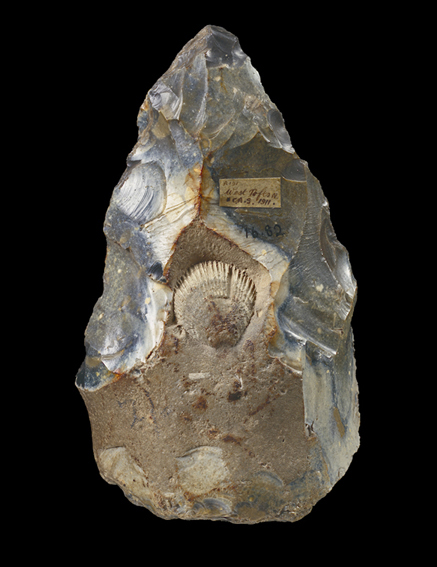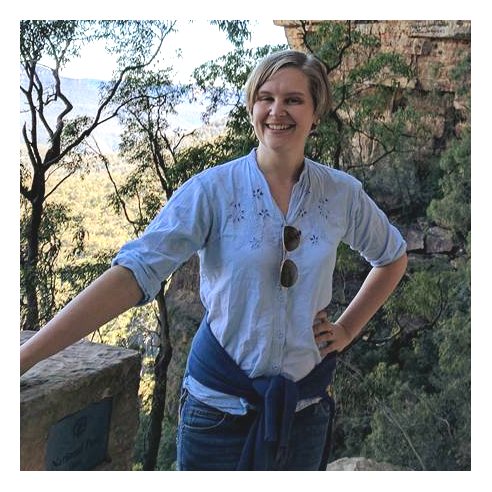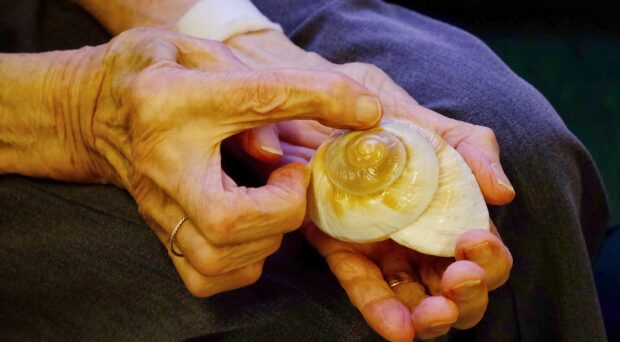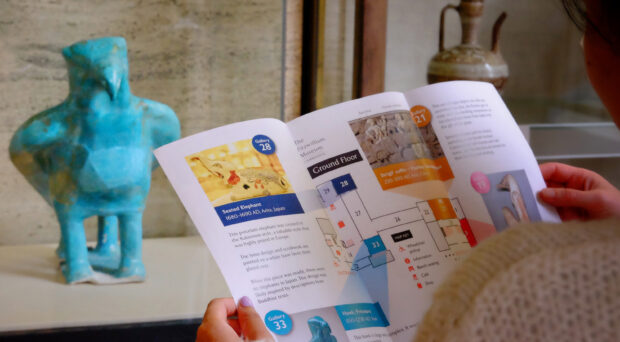Mindfulness is about being completely aware of the present moment. It can be practised at any time – you can do mindful walking, mindful eating, even mindful tooth-brushing! We wanted to see how mindfulness could impact and maybe even improve a museum visit.
I attended the GEM Foundation Course in Museum Learning last October. As part of the course, we all came up with a work-based project to complete. One of my fellow course participants from Colchester Museums mentioned how she wanted to use mindfulness to inform her handling sessions. I thought this was a fascinating idea. When the University of Cambridge’s Festival of Wellbeing asked for submissions earlier this year, I took the opportunity to try out mindfulness with the Museum of Archaeology and Anthropology (MAA)’s collections.
The first thing I did was spend a lot of time reading about mindfulness! I’ve done yoga for many years, as well as meditation and some mindfulness exercises, but I still wasn’t sure exactly how to bring this together for MAA. But I was glad of the chance to learn more. Emma at Colchester Museums very kindly shared her GEM project with me, which was a great start. I found out a lot of art galleries have been running mindfulness sessions, like the Rubin Museum of Art in New York, the University of Navarra Museum in Spain and, closer to the home, the Manchester Art Gallery. At the University Library I found an absolutely beautiful and invaluable book called Mindfulness: 25 Ways to Live in the Moment through Art, which links mindfulness exercises to artworks. With so much of my reading focusing on art galleries, I started to worry that looking at a museum object might be different somehow from looking at a work of art. But after finding myself getting lost in the patterns and colours of a flint hand axe during a teaching session, I decided there probably wasn’t much of a difference at all.
In the end, my biggest problem was the logistics. What object could I get my group to look at for the duration of the exercise and how would I fit them all around it at the same time? While MAA is not the smallest of the University of Cambridge Museums and while we do have some very big items (that totem pole!) there didn’t seem to be a comfortable place to arrange 15 people in the museum on chairs where they would all be able to see the same thing at the same time and not be in the way of the rest of our visitors. I was also terrified of choosing the ‘wrong’ object. Of course, there wasn’t really a ‘wrong’ object, but I was convinced some participants would be disappointed if they came to the session and I made them look at an Inuit kayak when what they really wanted to look at was an Anglo-Saxon brooch. So, I made the choice to take the session into one of our meeting spaces instead of the galleries and use a variety of objects from the teaching collection. I thought this gave participants a degree of choice in what they looked at, as well as the added bonus of letting them touch and interact with the object as part of the exercise. I made a decision not to let people know what their objects were before the exercise started. This is something we do in our schools sessions and I hoped it would allow participants to more fully explore their object, rather than try to immediately categorise and ‘understand’ it.

I don’t always write out exactly what I’m going to say for a session, but because this was something quite new for me, I wrote out every single word of my script. I made my poor husband do the exercise at home while staring at a camera. He was very forbearing. I also asked some of my colleagues to participate in the exercise at the museum with actual teaching objects. Both practice sessions were incredibly useful. The feedback was mostly that I was talking both too fast and too much! I wasn’t leaving enough brain space for people to try and do the things I was asking them to do. Leaving space and time during the session was the hardest thing for me – I ended up having to write on my script how long to wait (15 secs, 45 secs) and I timed myself on the day, just to make sure I didn’t get carried away.
We had no drop outs for Festival of Wellbeing, which was wonderful. Unfortunately, it was a very hot day and the room we were in was uncomfortably warm. This meant the window had to be opened and some participants found the outside noise and heat distracting.
However, most of the feedback was overwhelmingly positive. For the first ten minutes, I led a mindful breathing exercise, with participants’ eyes open or closed. After this, they were encouraged to explore their object. They were first asked to only look at their object and not touch it. As part of the looking, they were asked to imagine what it might be like to touch it. After this, they were finally invited to touch the object, maybe just with a finger first and later picking up the whole object and feeling its weight. I had chosen objects from across the archaeology and anthropology collections, so as participants were exploring their objects I asked them to consider the people from across the world or across the years who had made or interacted with these objects before the participants. I asked them to feel the connections between themselves and these other people.
The most gratifying part of the session was how interested people were in their object by the end of the exercise. Everyone was desperate to know what they had in front of them, to learn more about it and to share what they had already discovered about the object during the exercise. Participants seemed to feel such a connection to the object they had looked at – many didn’t want to leave it behind.
One person did say they would have liked to have done the exercise with more than one object, which was something I hadn’t considered and is worth thinking about. From talking to people after each session, it was clear that the Festival of Wellbeing participants were more impatient to touch the objects than my MAA colleagues had been. This was interesting, as it seemed like I had felt this different energy in both sessions – my colleagues wanted to look longer and were reluctant to touch the objects even after I asked them to; and conversely, I’m sure I heard sighs during the Festival of Wellbeing session when I asked them to imagine yet another thing about the object instead of just being allowed to touch it, already. But, in both cases, I was wedded to my script and didn’t trust my instincts about the feeling in the room. Maybe with time I’ll get better at judging this and be able to adapt sessions to the needs of the group on the day.
In hindsight, it would have been good to involve someone more experienced in mindfulness when I was designing the session. This would have resulted in less hours of work for me and given me more confidence that what we were presenting was ‘genuine’ mindfulness.
We’re going to offer another session just for MAA staff members in November and we hope to run more sessions for the wider public next year. I’d like to solve the problem of doing some (or all) of the session in the gallery, whether or not this is doing the session after hours, only using the bigger objects in the gallery or making the exercise shorter and asking participants to stand.
Keep an eye out for more mindfulness sessions at MAA in the new year!







